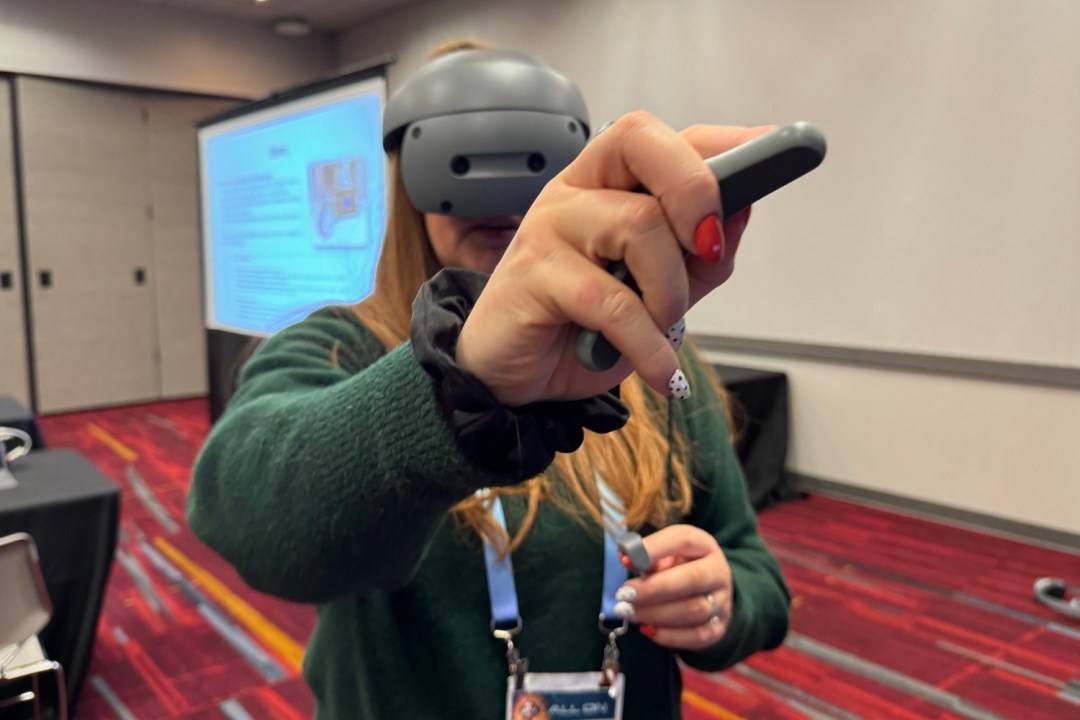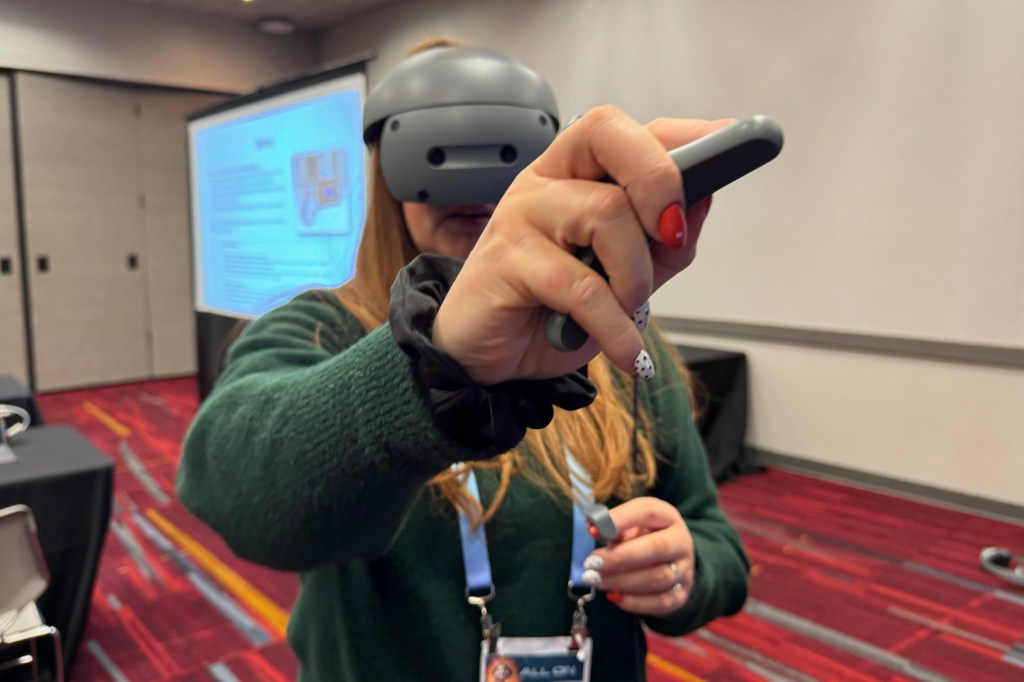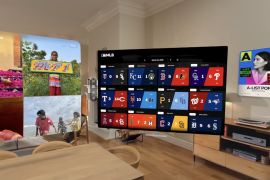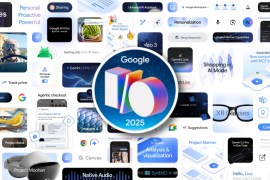I tried Sony’s Vision Pro rival – here’s why it won’t be challenging Apple
Sony has a new mixed reality headset that it revealed at CES but it's not what you think. Not yet, anyway

Sony surprised the crowd sitting through its press conference during CES 2024 when it glossed over the announcement of a mixed reality headset before moving very swiftly onto developments of the Afeela self-driving car we saw last year.
Despite the Sony XR headset being the most exciting reveal from the Japanese company at the show, very little information was provided about it. Enough to whet the appetite you could say, but not enough to tell you what the future of this headset would be.
Still, I managed to find myself in a back room at CES with what Sony is calling a Spatial Content Creation System on my head for a quick demo to see what it offers and how it might compare – or not compare – to Apple’s Vision Pro.
It’s not all about looks
It’s worth pointing out that Sony’s XR head-mounted display – which doesn’t appear to have an official name as yet – was a prototype.
That means that while it was a fully-functioning headset, my demo presented me with a first look at what we can expect when the final product appears later in 2024 rather than a final, market-ready version. In terms of finish however, it’s a less premium solution than the likes of the PlayStation VR2, Meta Quest 2 or Meta Quest 3. and Apple’s Vision Pro, all of which are significantly more polished.



Sony opts for a predominantly plastic finish in this new headset, including the adjustment mechanism at the back. It is very possible the final product will see more premium materials used, but for now, it’s a standard grey plastic finish all round. On the front, there are two cameras in the centre of the headset – specifications of these haven’t been detailed as yet – and you’ll also find what look like bolts holding things together though are more likely where the sensors are housed. There are total of six cameras and sensors for reference.
By comparison, Apple’s Vision Pro – which I saw and experienced in June 2023 – opts for very premium materials in everything from the mesh material that makes up the Light Seal to the Audio Straps and ribbed Head Strap. It also offers 12 cameras, 5 sensors and 6 microphones. Meanwhile, the Fit Dial on the side of Vision Pro has a rubberised finish that makes for a more tactile feel compared to what Sony is offering here, though that’s not to say Sony’s headset isn’t comfortable.
What about glasses wearers?
Where Sony offers more obvious advantages over headsets like Apple’s Vision Pro is that you won’t need special lenses if you wear glasses. The Sony XR head-mounted display is equipped with 1.3-inch 4K OLED Microdisplays in each eye – the equivalent of 8K in total across both eyes – and it offers Sony’s proprietary rendering technology to allow for real-time, realistic rendering of textures of 3D objects and facial expressions of human characters.
Crucially however, there is enough space between the headset and your face to allow for your normal glasses to be worn. For Vision Pro, special lenses will be required, significantly driving up the cost of the already exceptionally expensive headset.

It’s about personality too
Under the hood of Sony’s new headset is the Qualcomm XR2+ Gen 2 platform – which is the latest XR processor from Qualcomm with AI on board for enhanced user and space tracking – and this is the first headset to adopt the chip. The headset will also offer video passthrough when it launches, though this isn’t something that was available during my demo. I did say it was a prototype after all!
It will be interesting to see how Sony delivers this however because this is an area the Vision Pro is absolutely superb, allowing for a gradual switch between virtual and reality with a turn of the Digital Crown. It’s brilliantly done on Vision Pro, allowing you to be deep into a work project or virtual environment before turning the crown to focus yourself back in the room, and this is something Sony could benefit from given it’s use-case.
Interacting with objects
Still, what I was able to do during my time with the Sony headset was interact with 3D objects using the ring controller and pointing controller. I picked up a notepad with detailed text on it and dropped it into a different part of the virtual museum-like environment the demo had been set up with. I was also able to take photos using the virtual camera in the virtual space and move around paintings.
The detail of the large-sized 3D models was impressive on the Sony headset and the pointing controller allowed for accurate pointing. I did find the refresh rate a little slow overall, resulting in a slight delay between picking up objects and moving them – something I didn’t experience on the Vision Pro – but it’s clear how useful this headset could be for creators working with mode 3D objects, even if no controllers like Vision Pro would have been preferable.

My early verdict
And that’s perhaps the biggest takeaway from time with the Sony headset. It won’t challenge Apple because it’s going after a different target. It’s not as premium, the interface isn’t as impressive and the experience of moving things around isn’t as seamless as the Vision Pro delivers.
But, Sony’s headset could be a game-changer for its target audience, which currently sits with creators working on sophisticated 3D content creation rather than you and me (unless you’re a 3D creator). Who knows what the future could hold with this headset though, especially when it comes to entertainment because when it comes to that, Sony is certainly no stranger and this headset has heaps of potential.



